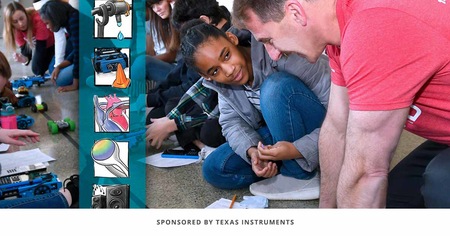According to the 2012 Program for International Student Assessment (PISA) the United States performed "below average" in mathematics and ranked 27th among 34 Organization of Economic Co-operation and Development (OECD) countries. This is a worrying trend, because math is not only part of STEM, but forms its very foundation. The more young people pursue STEM during their education experiences, the more proficient they must be in math. Math competency quickly becomes a differentiator for young people wanting to pursue a career in STEM. In addition, recent research has shown that there is a strong correlation between math knowledge in the early grades and later all-around academic achievement. Thus, math proficiency is critical to both general academic and STEM success.
How Can Afterschool Help?
Extending math learning beyond the school day can not only help young people to meet math standards and develop proficiency, but also enables them to engage in the kind of deep learning and comprehension they might not have time for during the school day. Afterschool programs provide opportunities for small group activities and a learning environment that is often less intense than a regular classroom.
Afterschool programs wishing to add math to their activity offerings can partner with their local schools to align their program academically and provide targeted instruction. Or, afterschool programs can simply add a math focus to some of their everyday activities to help reinforce learning and solidify understanding of key mathematics concepts such as counting, fractions, multiplication and division. Math afterschool should provide practice and experience in a fun way using a range of learning modes, including hands-on, interdisciplinary, cross-age and real-world. These experiences should not only develop competency and a positive attitude, but also encourage confidence in math skills.
Ten Tips for Providing Successful Afterschool Math Enrichment
1. Develop a relationship with the young people's school to align the math enrichment activities with the learning taking place during the school day.
2. Provide intentional homework support.
3. Utilize opportunities to provide individual and small-group instruction.
4. Emphasize critical thinking skills by asking open-ended questions, and encouraging young people to connect math concepts to other familiar ideas and find creative solutions to problems.
5. Make activities inclusive and maximize participation.
6. Provide engaging learning experiences that cover a range of learning modes.
7. Provide experiences that allow for success in math. Attitude towards a subject is often the driving force behind ability.
8. Embed math into regular activities to provide real-world experiences and demonstrate practical applications.
9. Provide staff training so everyone is comfortable integrating math.
10. Assess math instruction techniques and practices, and use the results to improve the quality of the activities.
Contributed by Andy the Science Wiz, NAA's STEM Specialist, Andy Allan




